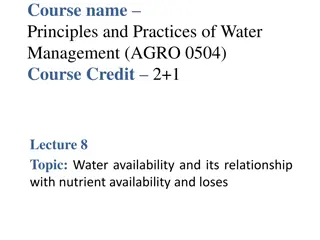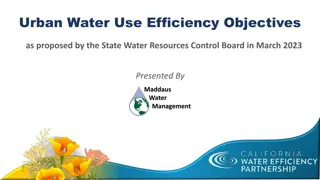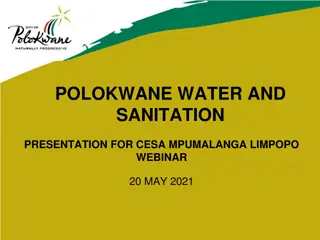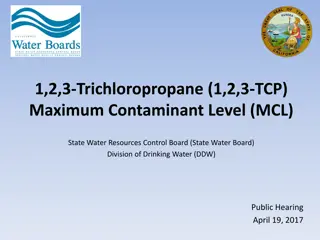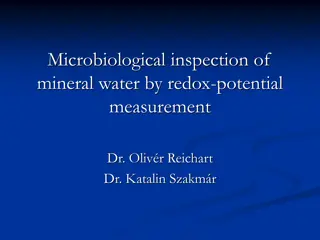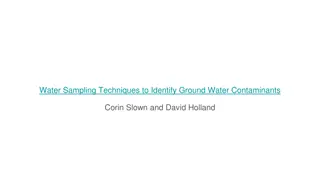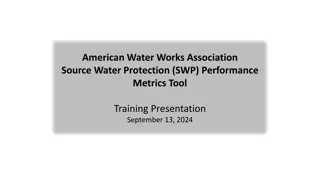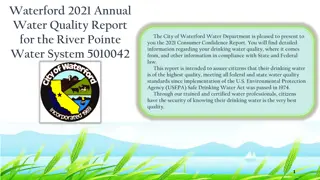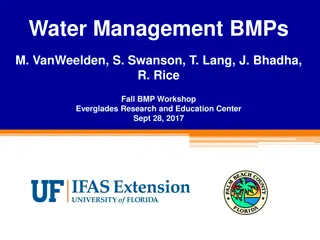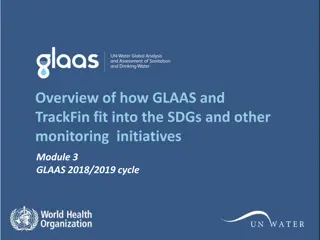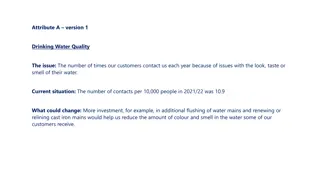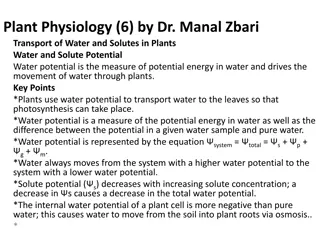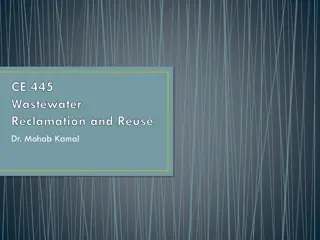Water Contaminant Information Tool (WCIT) Training Overview
The Water Contaminant Information Tool (WCIT) is a secure database providing information on priority contaminants for drinking water and wastewater systems. Developed in response to 9/11 attacks, it describes threats, offers peer-reviewed data, and includes over 800 contaminants of concern.
Download Presentation

Please find below an Image/Link to download the presentation.
The content on the website is provided AS IS for your information and personal use only. It may not be sold, licensed, or shared on other websites without obtaining consent from the author.If you encounter any issues during the download, it is possible that the publisher has removed the file from their server.
You are allowed to download the files provided on this website for personal or commercial use, subject to the condition that they are used lawfully. All files are the property of their respective owners.
The content on the website is provided AS IS for your information and personal use only. It may not be sold, licensed, or shared on other websites without obtaining consent from the author.
E N D
Presentation Transcript
Water Contaminant Information Tool (WCIT) Training
Overview WCIT background Why use WCIT? Who can use WCIT? How can you use WCIT?
What is WCIT? The Water Contaminant Information Tool (WCIT) is EPA s secure Web-based database of information on priority contaminants of concern for all hazards in drinking water and wastewater systems: Developed in response to 9/11 attacks Released in 2005 Describes contaminants that pose a serious threat if accidentally or intentionally introduced into water systems Data are peer-reviewed and regularly updated Data are specific to the needs of drinking water and wastewater systems 3
WCIT Contents 806 contaminants of the highest concern if introduced into water systems Types of contaminants: Pathogens Chemical warfare agents Toxins Pesticides Radiochemicals Other toxic industrial chemicals
WCIT Updates EPA continues to update WCIT data Major update EPA added 703 contaminants and over 200 analytical methods for drinking water Enhanced search feature EPA keeps WCIT up to date with other water program tools, including SAM (Selected Analytical Methods for Environmental Remediation and Recovery)
WCIT Uses As an all-hazards response tool, WCIT can be used in response to: Natural disasters Accidents Vandalism Intentional acts WCIT provides detailed information on contaminants, as well as methods to detect, treat, and recover from contamination incidents
Who can use WCIT? All of the information in WCIT is publically available online WCIT, as a comprehensive tool, is considered sensitive. Access is limited to: EPA and other federal employees Water and wastewater utilities Public health officials and laboratories Government laboratories Certain water associations Drinking water primacy agencies and their subsidiaries
How can WCIT be used? Practical uses in planning Tabletop exercises Full-scale national exercises Region 5 Region 4 Region 6
How can WCIT be used? During response to an actual event Laboratories: analytical methods Medical and public health officials: diagnosis and treatment information Utilities: information for identifying contamination and treating drinking water and wastewater Emergency responders: field methods Officials communicating with the public: reports on contaminants
How can WCIT be used? After an incident Data to assist in recovery and return to service: Wastewater treatment Infrastructure decontamination Laboratory methods to confirm successful decontamination
Live Demonstration Open your browser Navigate to https://cdx.epa.gov/ Log In with your User ID and Password Select WCIT from the list of programs




